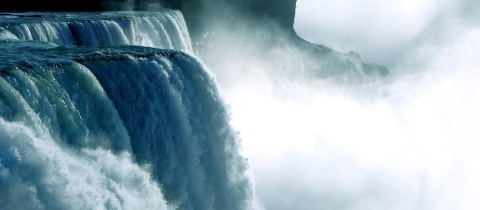We haven’t heard much about polychlorinated biphenyls, or “PCBs” since the fire at St. Basil-Le Grand in 1988, but we sure are hearing a lot now. There are two angles to the illegally stored PCB-filled transformers and contaminated waste in the Pointe Claire facility. There is the legal and political story, and then there is the scientific one. Without question, the PCB-containing materials were improperly and illegally stored and will have to be removed and properly processed. That is the law. And that part of the story was accurately portrayed by the media. But when it comes to the science, the risk posed by the stored chemicals as well as the “toxicity” of PCBs, in my view was exaggerated, generating an unwarranted degree of public anxiety. One got the impression that a cache of nerve gas had been discovered as headlines screamed about “toxic time bombs,” apparently ready to explode. In fact, PCBs are not the devil incarnate.
PCBs are non-corrosive, non-conducting, fire-resistant chemicals that were widely used in transformers, fluorescent light ballasts and hydraulic machinery until the late 1960s when an incident in Japan drew attention to their potential toxicity. About 1500 people became ill after consuming rice oil that had become contaminated with PCBs then used as a heat transfer medium in a process to deodorize the oil. The PCBs leaked into the rice oil through small holes in the pipe. Since the PCB-based heat transfer liquid was heated to 200oC in this process, there was a conversion of some of the PCBs to polychlorinated dibenzofurans (PCDFs) which are far more toxic than PCBs and were the likely cause of the gastric symptoms, jaundice, eye discharge and persistent skin eruptions (chloracne). Some long-term consequences were also noted. Women who had consumed the contaminated oil during pregnancy gave birth to slightly smaller babies who also experienced developmental problems. But numbers and measurements are critical to science. The Japanese victims consumed somewhere between half a gram to two grams of PCBs, which is several million times more than the amount anyone in North America could be exposed to even if they consumed fish from the most PCB contaminated waters.
The Japanese accident and a similar one in Taiwan in 1979 unleashed a flurry of research about the toxicological impact of PCBs. Electrical industry employees were extensively surveyed and few problems surfaced even among those who had spent thirty years working elbow-deep in PCBs. There was an observation of slightly higher death rates from rectal and liver cancers, but this was contentious because lifestyle characteristics such as alcohol consumption and diet had not been appropriately controlled for. Animal experiments on the other hand clearly showed that PCBs were toxic and even capable of triggering cancer. But again, let’s look at the numbers.
If we assume that humans react similarly to rats, a daily dose of some 8 mg per kg of body weight would be required to possibly cause a problem. This is about 500,000 greater than what the average person is exposed to on a daily basis. Still, the hint from from human occupational exposure and the animal data were enough to classify PCBs as “probable human carcinogens.” That classification is often misinterpreted. It just means that a substance is capable of causing cancer at some dose under some sort of exposure. It is interesting to note that Inuit populations in Quebec have some of the Highest PCB exposures with many women having higher than average levels of PCBs in breast milk yet the incidence of cancer is below the Canadian average.
One further concern is that PCBs have possible hormone-disrupting properties, which may indeed be the case. But there are numerous substances that we are exposed to, both natural and synthetic, that have such effects. In any case for any significant consequences, long term exposure would be required in the form of contaminated food. Basically then, PCB’s are not particularly toxic. Benzene, to which we are regularly exposed from gasoline, benzopyrene from wood-burning stoves and heterocyclic aromatics in barbecued foods are more “toxic.”
Now, back to Point Claire. PCBs have very low volatility and the trace amounts that evaporate dissipate quickly in air. We know this from the extensive studies that have been carried out in the vicinity of the Hudson River into which General Electric once reprehensibly dumped large amounts of PCBs. The river represents a huge source of possible airborne PCBs yet studies have shown no significantly elevated air levels in the vicinity and people living in the area do not have higher than normal background blood levels. The Pointe Claire site would be a far, far smaller source of PCB release.
In any case, as far as inhaling PCBs from leaks, it is a non issue. According to the U.S Environmental Protection Agency, the intake of PCBs that will not cause any harm is 20 nanograms per kg body weight per day. This is referred to as the “reference dose.” Since babies would be at greatest risk, let’s use them as an example. An infant would have to be exposed to air at a concentration of 70 nanograms per cubic meter to approach the reference dose. Measurements, even in areas near contamination sites, show levels 100 fold below this! PCBs are simply not volatile enough to represent a risk through inhalation. As far as possible contamination of the ground goes, no great issue here either. PCBs are very insoluble and bind to sediment. Trace amounts may be detected in the water table under the site but this is not the water that runs out of taps.
If PCBs have such low toxicity, why were they banned in the first place? Two reasons. They are extremely stable compounds and do not break down in the environment which means that further production would increase the amount dispersed around the globe and create a difficult situation should significant adverse effects come to light in the future. Second, PCBs are fat soluble, meaning they are not readily eliminated through the urine and build up in the food chain. Continued release into the environment would lead to increased body loads with possible health consequences. Given that alternate chemicals were available, the ban on PCBs was reasonable, although there is no guarantee that the replacement chemicals will prove to be less problematic.
In any case, neither storing PCBs illegally nor withholding of information by governments can be condoned, particularly because a fire at such a facility could result in truly dangerous furans and dioxins being released. However the chance that anyone would suffer any adverse effect that could be linked to the stored PCBs I believe borders on zero. But the effects of the stress caused by the unrealistic portrayal of a "toxic time bomb" may not be zero.







